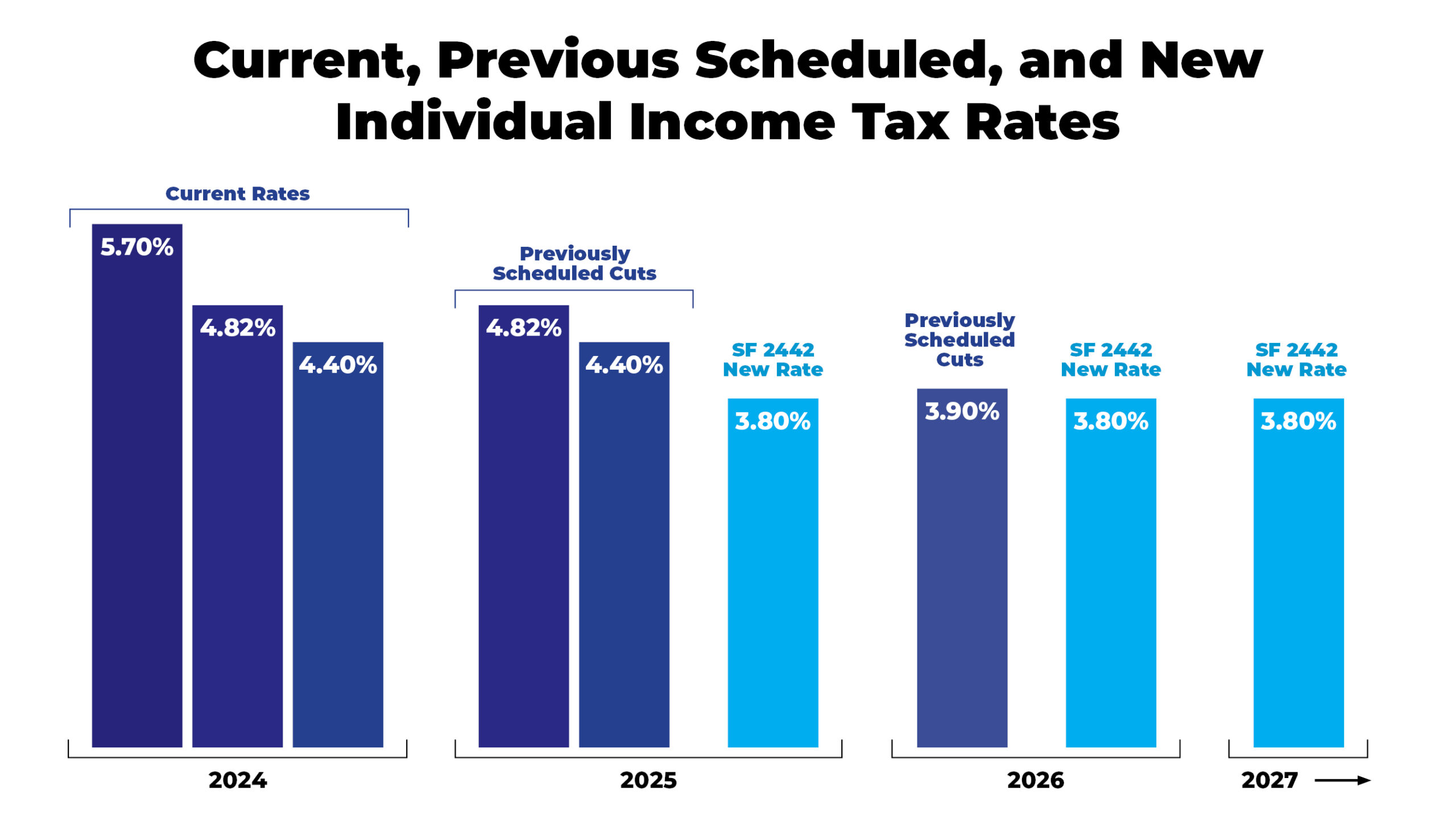This article was published in National Review.
The flat tax will now start a year earlier, and at a slightly lower rate, than originally planned.
“The headline of this session is simple: Iowa’s income-tax rate will be the 6th lowest in the country,” stated Iowa senate majority leader Jack Whitver. Going into the legislative session, Governor Kim Reynolds and legislative leaders had made further income-tax reform a priority. The result was the acceleration of Iowa’s move to a flat tax, which will now start in 2025 at 3.8 percent instead of starting in 2026 at 3.9 percent, as originally planned.

In 2022, Iowa became part of what has been referred to as the “state flat-tax revolution,” when legislation was passed mandating that the state’s progressive income tax would be phased out and replaced by a 3.9 percent flat tax starting in 2026. Meanwhile, the corporate-tax rate is currently 7.1 percent and is scheduled to be lowered until it reaches a flat 5.5 percent in the coming years.
“The flat 3.8% rate will save taxpayers $1 billion dollars in the first two years alone. All combined, Iowa’s individual income, corporate, and property tax cuts are estimated to generate $23.6 billion in tax liability savings by the end of fiscal year 2030,” stated Governor Reynolds.
Iowa once had some of the highest income-tax rates in the nation, with a top individual rate that was close to 9 percent. It also had a highest-in-the-nation 12 percent corporate-tax rate. Since 2018, Governor Reynolds and the legislature have gradually been reducing the income-tax rate, and have implemented a revenue trigger to lower the corporate-tax rate. They have also broadened the sales-tax base.
Accelerating the implementation of the flat tax was made possible as a result of the conservative budgeting of Governor Reynolds and the legislature. Too often tax cuts are seen as the marquee conservative policy, but prudent budgeting is the foundation for any successful tax policy.
As part of an earlier tax-reform measure, the legislature had created the Taxpayer Relief Fund to capture surplus state money and place it into a special fund dedicated to income-tax relief. Going into the 2024 session Iowa had a fiscal year 2023 budget surplus of $1.8 billion, the reserve accounts were full, and the Taxpayer Relief Fund had a $3.7 billion balance. Budget surpluses are also projected for both fiscal years 2024 ($1.9 billion) and 2025 ($2.4 billion). This is the result of smart budgeting, which has allowed policymakers to responsibly reduce tax rates. Even with phased-in tax cuts, Iowa’s revenues continue to be strong.
In addition to accelerating the implementation of the flat tax, the legislature also passed two important constitutional amendments which will serve as taxpayer protections. The first would require a two-thirds vote of each house of the legislature in order to approve income-tax increases. The second would protect the flat tax, which means that a future legislature would not be able to reinstate a progressive income tax or a “wealth tax.”
Iowa has a stringent process in order for a constitutional amendment to appear on the ballot. Both amendments, in order to appear on the November 2026 ballot, will need to be passed again by the legislature during the 2025 legislative session. “Constitutional amendments to require a flat tax and a supermajority to raise taxes give Iowans the confidence to know state government will stay within its means, and taxes will remain low, fair, and structured to promote growth,” Whitver said.
The Iowans for Tax Relief Foundation poll conducted during the session demonstrated that nearly 68 percent of Iowans support a two-thirds-majority requirement to increase taxes, while The Des Moines Register poll found that 62 percent favor gradually eliminating the income tax.
As part of her agenda, Governor Reynolds is also reducing the size and scope of state government. During the 2023 legislative session, the legislature passed the governor’s state-government-reform initiative, which was the first major reform of the bureaucracy in 40 years. The result was the consolidation of cabinet agencies and the reform of Iowa’s administrative state to make it more efficient and accountable.
Iowa’s pro-growth tax reform is attracting national attention, but it is part of a larger fiscally conservative policy agenda that starts with prudent budgeting. So while the 3.8 percent flat tax is a tremendous achievement, it’s clear that income-tax reform is far from finished.
